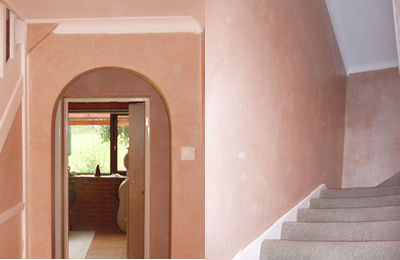If your house, like virtually every other house in the western world has plaster as one of it’s construction materials, you can be sure that at some point you will need to repair the plaster.
The process of repairing plaster can be daunting because of its exhaustingly repetitive nature. Cracks in plaster appear due to changes in humidity and temperature so they are almost inevitable. Over the years, the walls of a house must expand and contract hence cracks must appear on plaster. These changes can also cause holes in addition to cracks.
Here is how you can repair cracked plaster.
- Cut several pieces of mesh tape. These will be used to cover the cracks and they should be of different lengths because cracks are usually curved.
- Use the mesh tape to cover the cracks in the plaster.
- Take a joint compound and mix it in a mud pan or any other container you choose for the job. Start by putting the joint compound in the mud pan and slowly add water until you reach the desired consistency and all lumps are gone.
- Use a whisk broom to remove any loose material from the cracks.
- Use a putty knife to apply a very thin layer of joint compound on the cracked plaster. This layer should not be thicker than an eighth of an inch.
- Remove half of the joint compound to make sure that no lumps are left. You should not remove too much compound because the mesh tape will cause the second coat to blister if the first layer is too thin.
- Leave the coat to dry completely before adding any more coats. Each joint compound has unique instructions from the manufacturer so you must adhere to the instructions on the packaging.
- Once the first coat has set, apply the second coat to hide the mesh tape. The second coat should be 1/16 inches thick and you should taper it to make it blend with the surrounding area and the tape. Scrape away any protrusions on the second coat before proceeding to the third coat. Smooth the area with a grout float. Dampen the grout float and slide it over the patch until the surface becomes even.
- Leave the second coat to harden taking into account the manufacturer’s instructions. Afterwards apply the third coat.
If your plaster has holes, proceed with the following steps:
- 1. If your wall has a lath board, remove excess plaster and debris.
- Use a damp sponge to moisten the area and fill the hole with joint compound. You can apply as many coats as you need to – just make sure that each coat is not thicker than 1/8 of an inch.
- If the hole is very large, trim away plaster surrounding the hole until you see the studs in the wall.
- Screw a lath section into the studs.
- Follow the steps for repairing cracks adding layers of one eighth-inch thickness until the section is as thick as the surrounding plaster. Finish the patched hole to look like the surrounding plaster. You should avoid pre-mixed joint compound because it might fail to bond well with plaster.
This post was supplied by Mark Stubbles. Mark is a DIY enthusiast and guest blogger currently writing for West Yorkshire based plastering and drylining firm, PlasterPro.
